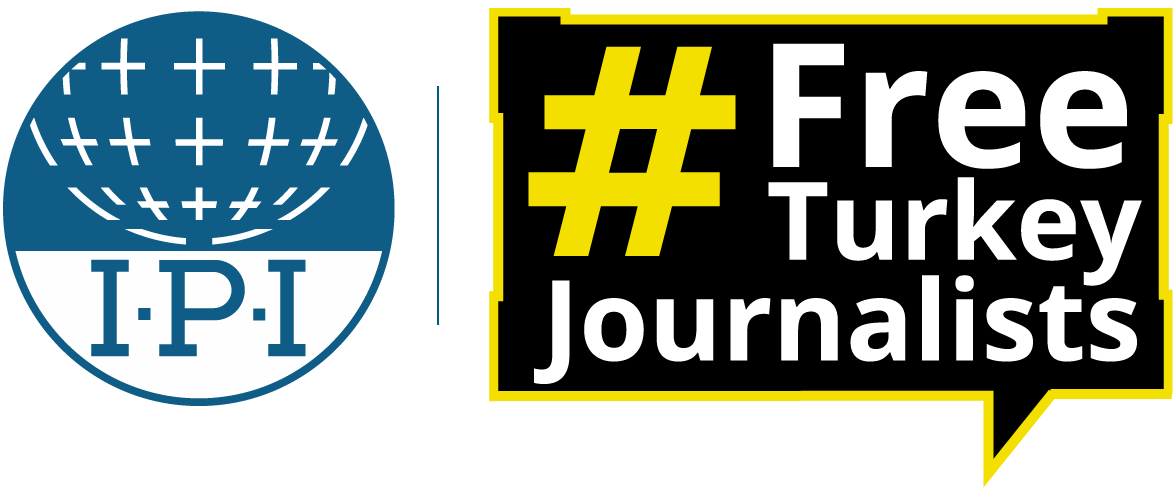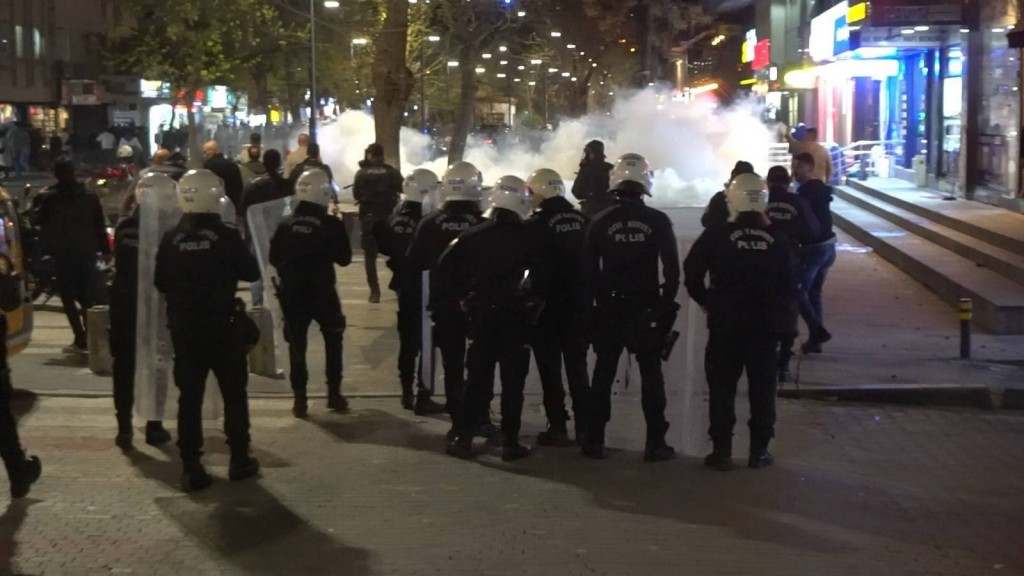“You are recording it, but you do not publish it. Nobody hears our voice.”
This was a cry uttered in hopelessness when the police attacked the Pride Parade in Istanbul in 2015, which had been a peaceful event until then. This was how Hande Kader, along with her friend Didem Akay, sitting right next to her on the sidewalk, was calling to the media as the two were getting hit by high-pressure water discharged from the cannons of heavy-armored police vehicles. Soon both Hande and Didem were taken into custody. On that day, some participants lost an eye, and many were wounded.
The photographs taken from the event were published. Yet we saw neither Hande’s nor Didem’s name in the media. The news cycle was already dense. It was only possible to see the stories of LGBTi+ in the media until the next Pride Parade if they were killed or targeted by the government. And that is what happened. A year after the parade, in 2016, it was discovered that a young trans woman was burned alive. That person was Hande Kader. This time the media referred to her by her name. Everybody wrote about her. Then she was buried in the media’s “cemetery for the unclaimed”. These days Hande is one of the names recited along with the names of the other slain transwomen as part of press releases issued by Turkish LGBTi+ associations.
Didem, who was sitting next to Hande on the sidewalk during the 2015 raid, appeared in the media in 2019. She had committed suicide. The media had allocated a few lines to her while revisiting Hande Kader’s murder by publishing the picture from 2016. And then, Didem, too, was a fading memory.
We report, lest we forget
To cover LGBTi+ issues in Turkey is an open challenge against forgetting. It means to listen to and write about stories without giving up or hiding behind such excuses as busy agendas, the weight of “more important” issues, or the agenda-setting power of politics. Contrary to the popular mainstream reporting that prioritizes the reporter rather than the story, to cover the stories of silenced people is the acknowledgment that you become the voice of none other than the silent.
This is my tenth year on the job. For the past eight years, I have intensively covered and written LGBTi+ news. I learned journalism in the early 2010s on the backstreets of Istanbul like Tarlabaşı, where the Roma, Kurds, and transwomen live. As the single-room tenements of the neighborhood were demolished under the pretext of gentrification, my reporting practice has also transformed into keeping a specific memory. Yet, I am back where I started after ten years of chasing news from the streets to justice halls to pride parades to the mourning houses after a murder, in 35 cities of Turkey’s 81 provinces. To tell stories, lest we forget—the stories whose subjects are different, yet the objects are ever the same.
To write that which nobody writes
My first story is from 2012. I started on this job voluntarily to learn about reporting when I was still a student. In fact, when I noticed that the newspapers did not cover what I witnessed as an LGBTi+ activist, I said to myself, “If you want something done right, do it yourself”. At the time a large-scale lynching campaign against transwomen was being organized in the Avcılar district of Istanbul. “Local residents” were appearing on TV channels and openly declaring, “We do not want trannies in our neighborhood”. In parallel, the morals bureau within the police department were conducting raids into transwomen’s homes. One day we heard that the “local residents” formed a mob in front of the tenements where transwomen lived and started a fire while barring the women from leaving the complex. We rushed to the site. Even though I did not go there as a reporter that day, the scene I saw shocked me into writing my first piece.
There was an actual fire, and people had formed a mob. But what shocked me most was the identities of the people. On one side, there were people clustering around a man who donned religious garb. As the man in religious dress chanted, “These are sinners,” those encircling him had nearly gone into an ecstatic trance. On the other side, a self-claimed retired colonel had mounted a military truck, preaching to his own crowd: “There is no room for trannies in Mustafa Kemal’s[1] country; we shall fight them as we fight terrorists.” His crowd, too, was getting frantic. Two diametrically opposite sociopolitical groups that would not have normally come together under the political dynamics of the time were united in their common desire to lynch transwomen. Meanwhile, middle-aged women were watching what was transpiring as they snacked on sunflower seeds. And forming the outermost circle of the mob, the young men from the neighborhood were flexing their muscles—ready to join the action if need be. While five utterly different groups, united in their desire to lynch, formed a crescent encircling the tenement of transwomen, the police just watched from a safe distance from the crime scene. As we thought that it could not get any worse, someone brought baklava to the mob. They all enjoyed it and even offered some to the police.
Reporters, you ask? They had not arrived at the scene yet. I spotted a few cameras. They were recording and were going to broadcast. But no camera crew was interested in interviewing the transwomen. They were asking questions to the individuals from the mob and recording their answers.
Speaking in English and pretending to be a foreign guest of a tenant in the building, I managed to enter the apartment where the women lived. I had known some of them, and I met the others just there. When they complained in distress that “no one knows what we are going through; no one is taping us on film”, I found myself saying, “I’ll write.” I didn’t have a camera, smartphone, or audio recorder. But I wrote my first story by staying with them that night. I wrote down what they told me and sent my story to a news website that I knew. And that is how my career started.
One day, maybe…
10 years have passed since this story. Unfortunately, the sentences I constructed as a journalist have not changed. Sometimes I reported from the midst of another lynch, and sometimes I covered another police raid on another Pride Parade. I have been taken into custody and beaten by the police. Yet I have never forgotten that night in Avcılar as I lived through everything a journalist and an LGBTi+ individual could have possibly gone through in double quantities. “Unless I write, probably no one will” is the creed that I repeat to myself as my professional life unfolds. My story as a reporter is the perpetual revolution of that first night.
My story as a journalist has also been a story of solitude. This has been the case even when I felt that I did my duty—for example, when I reported on the murder Wisam Sankari, a homosexual refugee who was decapitated in Istanbul, and made sure that both national and international media picked up the story. Or when I was disappointed in the lack of attention by these organizations to other cases despite my own best efforts. While there are many reporters and editors working in almost every field, the number of those who regularly cover LGBTi+ issues can still be counted on the fingers of one hand.
To report on LGBTi+ issues in Turkey is a story that starts with “unless I cover it, no one will” and develops into “anyone can publish my story in any way they want as long as the story is heard”. To be a queer journalist who covers LGBTi+ issues in Turkey, on the other hand, is akin to restoring the hope of writing fun stories in the future, while continuing to cover discrimination, violence, and murder that may find you, too, one day.
[1] The founder of the Republic of Turkey.




